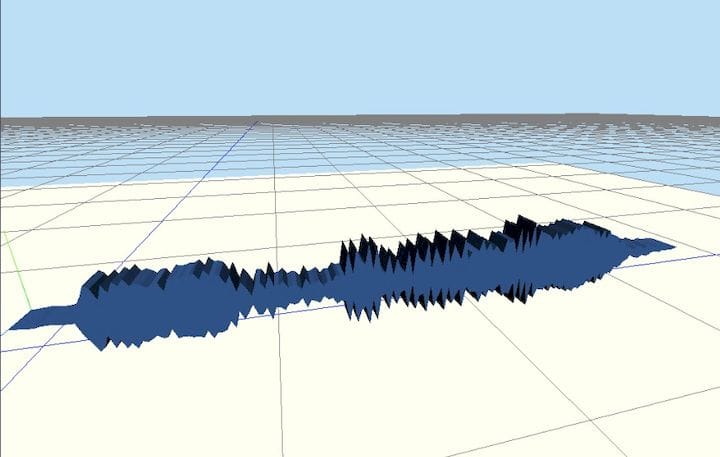![A 3D printable version of the audio waveform for “Fabbaloo” [Source: Fabbaloo]](https://fabbaloo.com/wp-content/uploads/2020/05/image-asset_img_5eb096ded7f4a.jpg)
There’s an interesting service called 3DPrintedSound, and it does just that.
The online service, created by developer Tim Toplak, provides near-instant creation of 3D printable models based on an input sound. It’s provided free of charge, at least for now.
The entire process takes place on a single web page, where at the top you can either upload a previously recorded .WAV audio file, or record your own by permitting your browser to access your PC’s microphone. It even allows you to trim off the leading and trailing silent portions of the recording.
The ability to upload .WAV files is important, as it allows you to “solidify” not just a voice recording, but ANY recording of any sound, so long as its duration does not make the file too large.
The service analyzes the audio to produce a waveform representing the sound. It then converts this into a 3D model based on a number of parameters you can specify. Two types of 3D models are produced.
One form is a flat style, which can be made either symmetrical or single-sided. At top you can see our printed version, which is a representation of “Fabbaloo”. You can do the same with whatever sound you’d prefer.
The other form is a bit more complex, and it involves rotating the waveform around an axis to create a wobbly cylinder in the shape of the waveform. Here’s one that we generated, again with the sound “Fabbaloo”.
![A 3D print of us saying “Fabbaloo”, or at least the waveform of that word [Source: Fabblaoo]](https://fabbaloo.com/wp-content/uploads/2020/05/image-asset_img_5eb096df4c599.jpg)
This particular 3D model could be quite challenge to 3D print, as it has some very spindly portions. It would have to be printed vertically, meaning these spindly sections would have to somehow support the weight of everything above them. It’s possible one could use support structures, but perhaps this shape is best 3D printed in SLS or some other 3D printing process that does not require support structures.
There is also an option to include some text in the print, at least for the flat shape. This does require some fiddling, because if you do not size the text properly, it will overwrite some of the waveform itself, defeating the purpose of the print. We suggest sizing the text so that it fits neatly inside the waveform.
There is another option to print a mount and mount points on the 3D model. This could assist in finding a feasible way to display the print other than leaving it lying on a table.
An interesting idea would be to print a number of sounds as gifts, or even holiday ornaments. Then you could make the recipient guess what they say. Hm, on second thought, this could also be used in an abusive manner by thoughtless 3D printer operators, too. Well, it’s up to you.
Toplak has provided the 3DPrintedSound source code for the service to the public as an open source project. Hosted on GitHub, anyone could download the code and modify / include it on their own audio 3D printing projects. This could generate some interesting ideas, I think.
Via 3DPrintedSound











MakerOS has a brilliant hidden feature in their online service: a sophisticated 3D print pricing calculator that allows operators to determine exactly how to price prints.